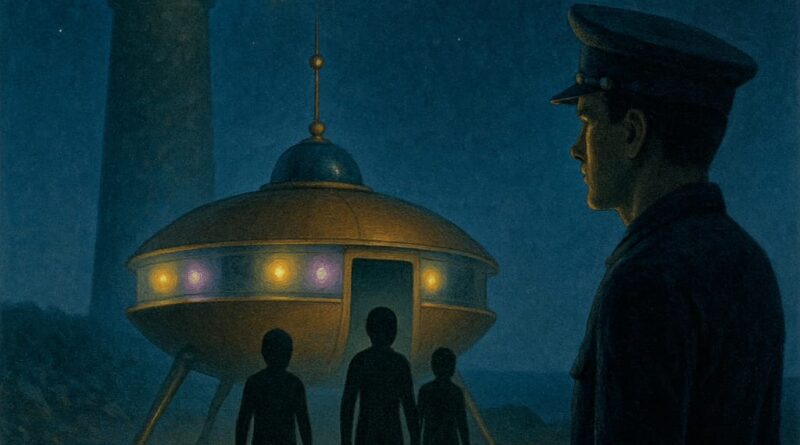THE CASE OF LOBOS ISLAND: UFOs AND OCCUPANTS UP CLOSE AND THE RIDICULOUS VERSION OF A DISINFORMER (By Carlos Ferguson)
In memory of Dr. Willy Smith
This work on the famous «Isla de Lobos» case exposes and dismisses an attempt at a «new explanation» for the event.
THE PLACE…
Lobos Island is a small island located 8 kilometers southeast of Punta del Este, in the department of Maldonado (URUGUAY). It was discovered by Juan Díaz de Solís in 1516 and named «San Sebastián de Cádiz.» Gaboto visited it in 1527.
In 1858, the Uruguayan government erected a lighthouse, which was rebuilt in 1906. Its height makes it one of the three tallest in the world. It emits a flash visible from a distance of 40 km.
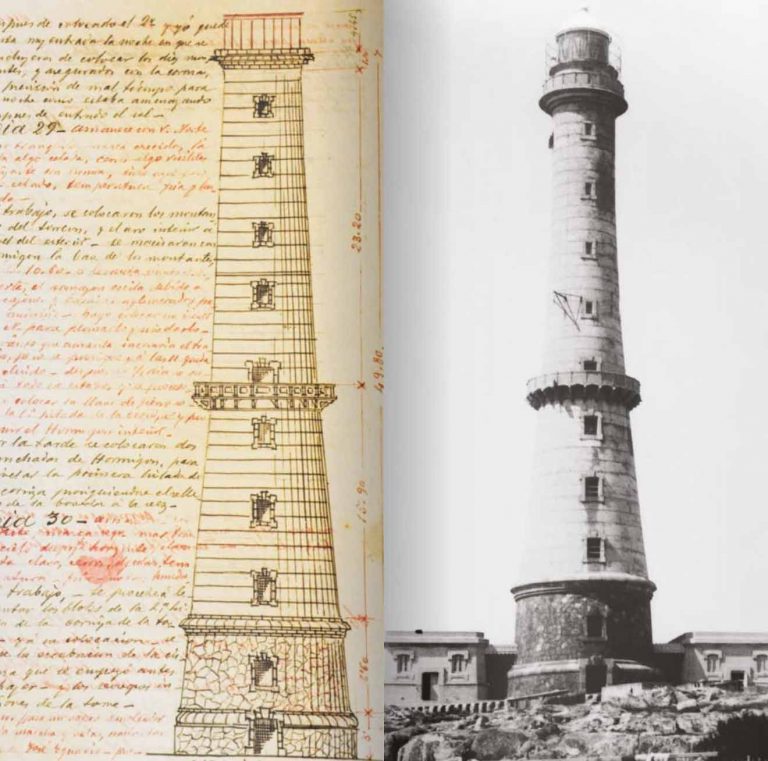
It is a rocky outcrop, a continuation of the Cuchilla Grande (Eastern). It covers an area of 41 hectares, is 1.2 km long, and 816 meters wide. Its most prominent section reaches 26 meters high, and its shores form cliffs with few beaches and gravel. Sparse vegetation surrounds the entire central area, with a large plateau covered by a thin layer of soil.
It was exploited as a sea lion colony until 1992. It is currently a Nature Reserve.
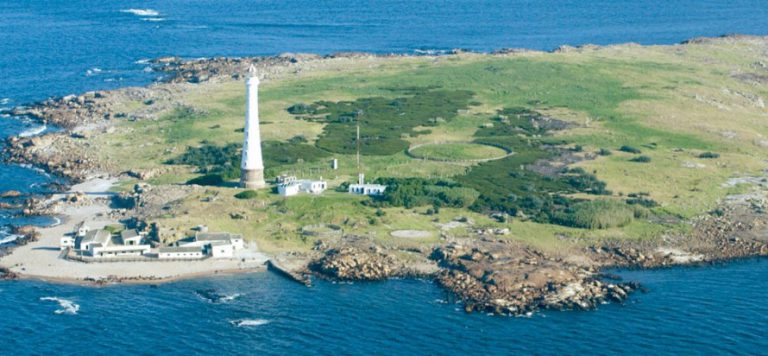
RETROSPECTIVE ANALYSIS…
It was October 28, 1972, and Uruguay was experiencing some political turmoil.
On Lobos Island, it was approximately 10:10 p.m.
The lighthouse was supervised by Navy personnel assigned to that role.
That evening, five troops were on the island, in a building about 50 meters from the lighthouse.
After dinner, four of them played cards (Private Sergeants José Gómez and Héctor Giménez, telegraph operator José Díaz, and Petty Officer Francisco Cascudo).
The fifth, Corporal Juan Fuentes Figueroa, went to check the lighthouse’s power generators.
The weather was good, with clear skies. The moon was not visible, as there had been a new moon two days earlier.
Juan Fuentes headed to the aforementioned area, on a date with destiny and the unknown. As he approached the lighthouse, he began to notice something strange: a copper-colored object perched on the roof.
It was two meters high by three meters long and had a metallic appearance.
In the center, a ring of flashing lights of different colors (white, yellowish, and violet) appeared. At the top, a dome and an apparent rotating antenna.
The object resembled an inverted bowl and had legs that retracted telescopically when lifted.
Fuentes, amazed by the strangeness of the object, returned to the building. He entered and went to his bedroom to get his automatic pistol, leaving again (without saying anything to his companions).
He approached cautiously and, after about 15 meters, observed three humanoid figures emerging from an apparent sliding door.
Two were between 1.40 and 1.50 meters tall. A third was about 1.80 meters tall.
They moved slowly and heavily, as if they were struggling with the clothes they were wearing.
In the study conducted by Dr. Willy Smith, it was determined that the entities appeared to be wearing tight, dark clothing. One detail in particular was evident: an elongated shape could be seen on their backs or heads.
Within seconds, the three figures turned and warned the witness, then began to approach.
Surprised and unpredictable, Fuentes only managed to release the safety and tried to fire, but something strange happened.
His body remained paralyzed, although he was conscious and pointing his gun at the figures. Fuentes also recalled a strange, almost telepathic communication telling him, «Don’t shoot, it’s useless.»
The report indicates that «Fuentes, a poorly educated man,» tried in vain to explain to investigators how this happened. It wasn’t telepathy, and he did feel some physical effects, like a «vibration,» but rather a premonition, in his words: «Don’t shoot, it’s useless.» In any case, he felt paralyzed and confused, and couldn’t shoot.
He was terrified and wanted to shout to his companions, but couldn’t.
The action accelerated. The entities re-entered their «ship,» the tallest one first.
Although Fuentes couldn’t make out what they were walking on, there was a railing (he never saw any stairs).
The door closed on the side, and the craft began to ascend, emitting a whirring noise until it reached about 30 meters, judging by the height of the lighthouse (66 meters).
Then, tilted, a bright «fireball» shot out from below, and the craft disappeared at breakneck speed into the Eastern Atlantic Ocean.
During this acceleration, Fuentes thought the object would crash into some rocks.
He didn’t hear any noise (except for the whirring noise as the object took off), and it all lasted about a minute.
After this, the corporal regained mobility and headed for the building where the rest of his crew were.
Upon entering, his companions realized something strange had happened (he was pale and still holding his weapon). Right there, he told them, «I saw a flying saucer.»
All his colleagues went out to see if they could see anything, but they saw nothing. At first, some thought it was a joke, and Fuentes became upset.
Fuentes reported the sighting to his superiors only after completing his mission on the island, on November 14.
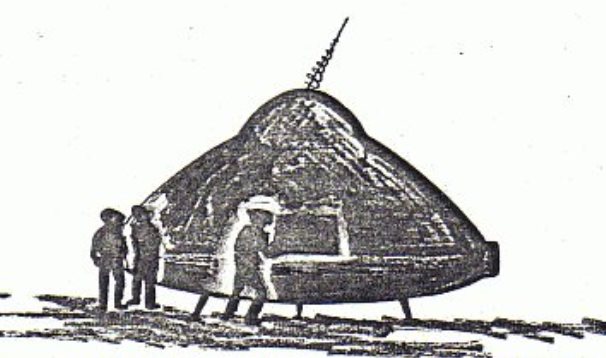
US EMBASSY INTEREST?
Fuentes was reportedly summoned by a senior official to a meeting with “two members of the US Embassy staff.”
Although he never spoke to either of them except through an interlocutor, he was offered drawings of flying objects and asked to see what was closest to what he had seen (as depicted five years later in the film “Close Encounters of the Third Kind”).
Fuentes’ colleagues described him as a straightforward and honest man, incapable of fabricating such a story.
The CIOVI conducted a nine-hour psychological study with Fuentes. From these analyses, a description of the witness was obtained. Basically, and “in light of the narrative, they tend to lend credibility to the story” (various tests were administered: Raven, Bender, Roschard).
Fuentes did not have a tendency to fabricate or lie.
MORE DETAILS…
According to “República.com,” in Fuentes’ statements almost a year later (August 18 and September 1, 1973), we find the following:
Regarding the object’s color:
“It had a somewhat reddish color, something like… burnt, it had a mahogany color, the thing, the metal plate of the device, because you could see it with the lights from below.”
About the sound produced:
“At that very moment, I aimed the gun, as if I were ready to shoot, and I felt, I don’t know, like a vibration, something strange in my body, uh… I felt a buzzing sound… then I remained static, until I saw them enter one by one… the door closed automatically, and it started making a sound, a sound, a sound, a sound, I don’t know, something, a buzzing, something fantastic… it made a buzzing sound and slowly began to take off from the terrace, until it gained altitude…”
In the same statement, the subject of the noise is returned to, the buzzing sound is mentioned, and the witness is asked to simulate it with his voice. The witness then responds:
“I was making biug… biug… biug (a cyclical sound that imitates onomatopoeia),” is clarified in the written version transcribing the interrogation recording. Later, the witness says: “That fire… It must have made a noise… I’ll stick with that, that fire makes… Noise, the flame makes a noise when it comes out with force.”
On the disappearance:
“The lighthouse is 66 meters high. It reached a height about halfway up the lighthouse, and it leaned toward the coast, toward the beach, where there are some tremendous rocks, some cliffs. Then it threw out a fireball from below, blinding, a fireball, like a flare of all colors, reddish and white, right? And from there, from that moment on, it tilted upward, and took an angle of more than 45 degrees, because it tilted completely upward, it released that puff of fire, and that whirring noise continued, then it gained fantastic speed toward the beach. I said: Well, you’re going to feel the explosion there, it’s going to shatter, but it was incredible, because nothing else was felt.”
Regarding the crew:
«They opened an exterior door and exited. It seemed like they were exiting backwards.» (It’s worth noting that the witness sees everything in silhouette, with no details, backlit by the aircraft.)
Second questioning:
«The witness answers that the door opened to the left and closed to the right, and adds: ‘The boys went up, I think, I think they went up a ladder, took a few steps, and the last one out was the first one in.'»
He mentions again: «The whirring noise, just as it was taking off… that squealing noise.»
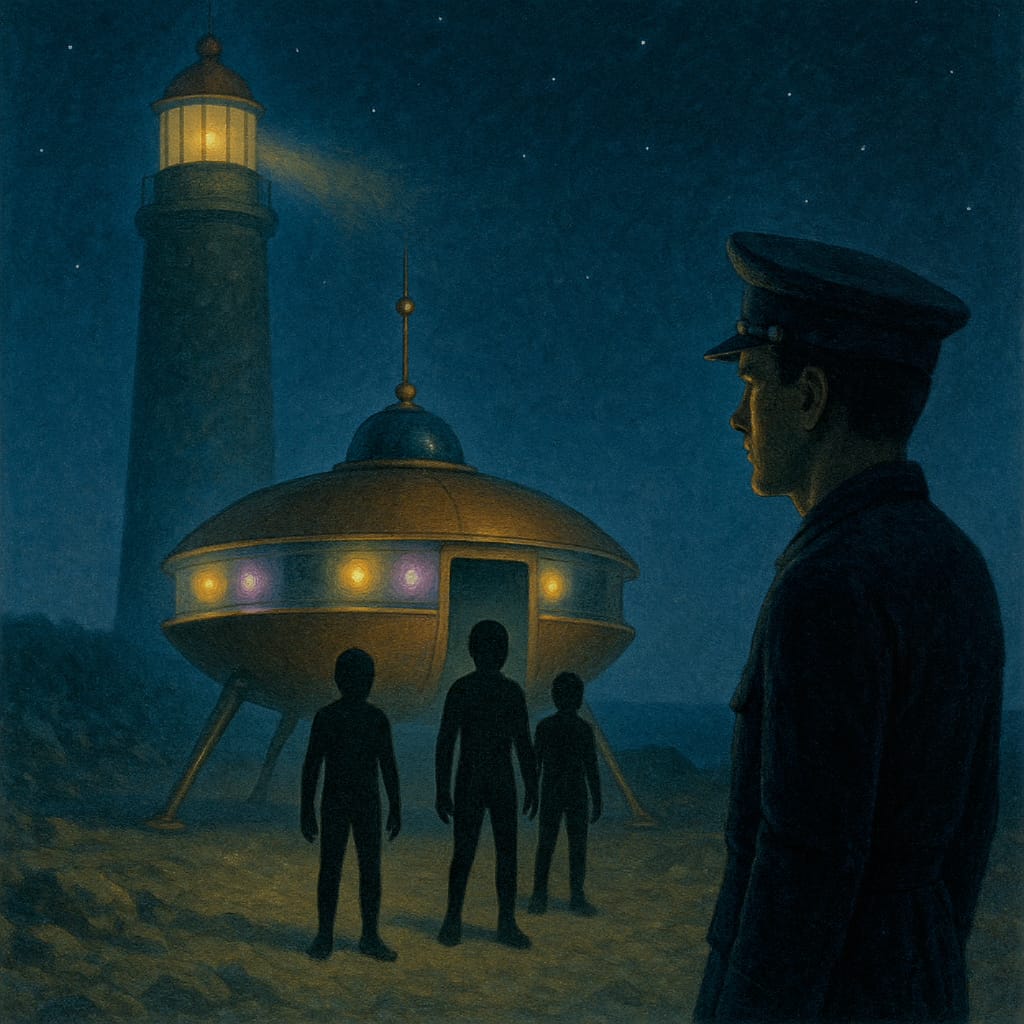
«THE ARGENTINE HELICOPTER»…
Over the years (usually when witnesses have died or a long time has passed), a desire for interpretation has been observed on the part of some disinformation providers.
They generally seek to make sense of what happened in old cases in light of new knowledge. This is commendable in scientific work, but not when there are significant prejudices.
The one who offered a new interpretation of the event was journalist Milton Hourcade (former ufologist and current advisor to Argentina’s official Aerospace Identification Center, headed by retired Commodore Lianza).
Hourcade (of the Ciovi group) had already delved into the case a year after it occurred and recounted it in his first book, «UFO Phenomenon: Challenge to Science» (Ediciones de la Plaza, Montevideo, December 1978).
At the time, he noted that «the problem with the case was that there was only one witness and there was a lack of material evidence, photographs, or other elements to corroborate the story.»
Incidentally, Hourcade couldn’t ignore that statistics on encounters with figures often show solitary witnesses, that photography is never meaningful evidence, and that it would have been a blessing to have a camera with film ready to take a picture in such circumstances. This is without even considering the physical after-effects Fuentes suffered a few hours after the incident.
But equally, in that 1978 work, Hourcade pointed to the authenticity of the case. This contrasts with his current position on the issue. In 2005, he proposed another «explanation» for the incident.
This contradicts the proposal made by another member of his own CIOVE group, Mr. Germán Vázquez (which we will analyze later).
Hourcade’s «new interpretation» maintains that what Fuentes saw was an «Argentine Navy helicopter» that attempted (for what reason, it is unknown) to land on Lobos Island.
To this end, Hourcade used a superposition of images (the helicopter and the drawing made by Fuentes in 1973) and described it as «totally convincing.»
He also clarified, to cover all possibilities, that:
«With this, we do not intend to imply that the helicopter that gave rise to the case was of Argentine origin, but it is the closest geographical reference.»
He added:
“What the Ciovi members didn’t know in 1973 was that a type of helicopter could explain the sighting. That type of helicopter was certainly not yet in use in Uruguay. However, since 1968, the Argentine Air Force, for example, had this particular type of helicopter, which allows us to explain the case based on its characteristics… The type and model is the Hughes 500, a small, versatile, and lightweight helicopter suitable for observation, reconnaissance, surveillance, and other missions. The witness said: ‘It had a reddish color like mahogany.’ At the time, an Argentine Air Force helicopter had that color.”
To complement the new version, a detail of the aircraft has been added, obtained from airlines.net:
Model 500 C = One 207 kW Allison 250 C-20 gas turbine engine driving a four-blade main rotor and a two-blade tail rotor. Main rotor diameter: 8 m³, fuselage length: 7 m³, height: 2 m³. Maximum cruise speed: 232 km/h (144 mph); long-range cruise speed: 217 km/h (133 mph). Initial climb rate: 518 meters per minute (1,600 ft/min). Operating ceiling: 3,962 meters (12,200 ft). Range: 605 km (370 mi).
Model 530 F = One 260 kW Allison 250 C-30 engine driving a five-bladed main rotor and a two-bladed or optional four-bladed tail rotor. Main rotor diameter: 8.33 m (27 ft); rotating rotor length: 9.94 m (32 ft); fuselage length: 7.49 m (24 ft); height at rotor top: 2.67 m (8 ft). Maximum cruise speed: 246 km/h (155 mph); economical cruise speed: 228 km/h (144 mph); initial climb rate: 630 m per minute (2,000 ft per minute). Service ceiling: 4,877 m (16,000 ft). Range on standard fuel and without reserves: 422 km (260 mi).
Capacity: Typically two front seats for pilot and copilot, and three in the rear.
Hourcade adds:
“The undersigned refrains from speculating about the reasons or motives why the helicopter landed on the date, place, and time indicated.
“Perhaps the helicopter’s occupants, upon seeing Fuentes’ reaction, decided to leave immediately…”
“To all this, it should be added that the witness had watched television programs hosted by the Argentine Nicolás “Pipo” Mancera, in which the UFO topic was repeatedly addressed from the most sensationalist perspective possible, with the studio lights practically off, trembling voices, special sounds, and the presentation of cases that have gone down in history as frauds.” (end of quote)
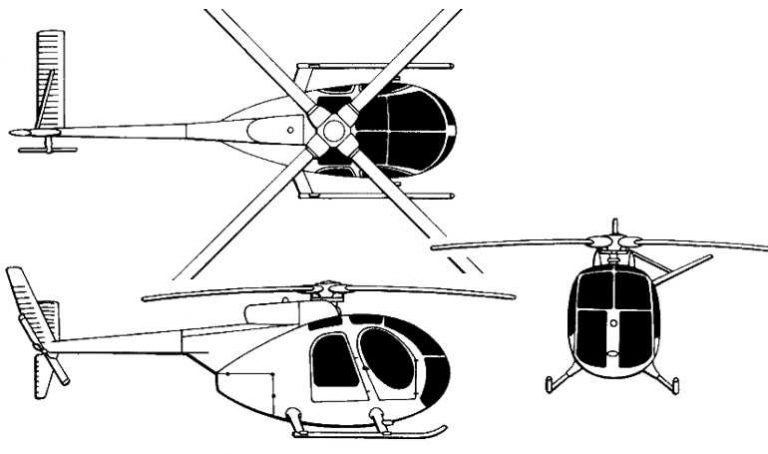
ADDITIONAL DATA ON FUENTES’ SON…
On the 40th anniversary of the 2012 incident, the online media outlet “República.com” published an article on the case, which also summarized the contributions of Dr. Willy Smith (Miami, Florida, USA).
The Argentine version of the helicopter is also mentioned in the article. At the end of the report, in the letter to the editor, witness Fuentes’s own son wrote the following:
“I am writing to you. I am the eldest son of Mr. Juan Fuentes. I would like to add that when this happened, I was 13 years old, and I perfectly remember the ordeal my father went through with the investigations into the case. But what this report doesn’t say is that, a few days after arriving home, my father developed red spots that looked like burns all over his right side (arms, chest, and legs) due to his skillful handling of the weapon. When aiming, he looked out of the corner of his eye, not straight ahead. He didn’t want to show those spots because he had already been through an ordeal of questions, psychologists, and other things, and he thought that if he went to the Military Hospital, they would use him as a guinea pig.
My father knew exactly what a helicopter sounds like. Furthermore, the Laguna del Sauce air base never detected air movement in the area, as it was under surveillance due to the internal political situation. The Navy’s uprising. I simply wanted to contribute something in memory of my father, may he rest in peace.” Best regards. (End of quote)
As noted, the witness’s son confirms the scarring his father suffered as a result of the experience, something that doesn’t seem to be taken into account in Hourcade’s new «helicopter» version.
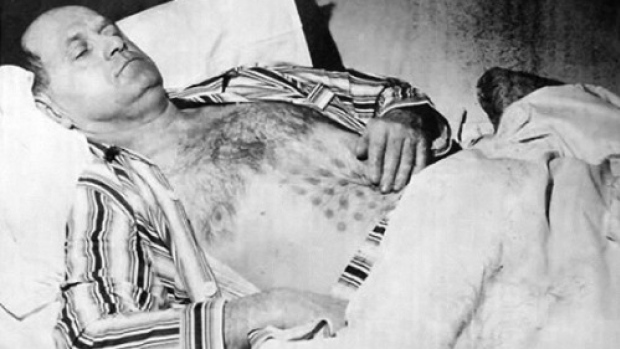
RECAPITULATION…
When I visited Dr. Willy Smith in Miami (December 2000), he told me the details of the case and the investigation he was conducting. Unfortunately, Smith was already suffering from health problems at the time. (QUOTE 1)
Since the helicopter story occurred with a deceased witness and was conducted a year before Smith’s death (who had already dropped out of the investigation), no one analyzed it at the time.
In sincere debt to Smith, I have decided to write this article to raise questions and present some facts about the incident to readers. Let’s analyze the aforementioned «new interpretation.»
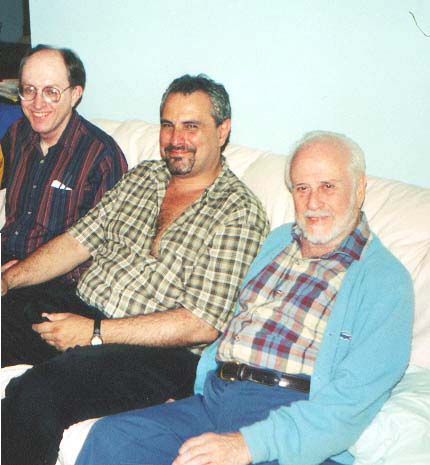
THE HUGHES 500 IN ARGENTINA…
In January 1969, the Helicopter Group, created on December 12, 1962, was received by the 1st Argentine Air Brigade.
The Hughes are civil and military utility helicopters manufactured by the American company MD HELICOPTERS (currently McDonell Douglas Helicopter Systems).
The design of the Hughes Model 500 began in 1960, when the United States Army requested a new light observation helicopter to replace not only the Bell and Hiller helicopters, but also the Cessna L-19 light liaison aircraft.
It was to be powered by a small turboshaft engine, reach a cruising speed of 200 km/h (124 mph), be capable of hovering without ground effect at an altitude of 1,830 m (6,000 ft), and have an endurance of three hours on observation missions. Ease of maintenance and low cost were prioritized.
In Argentina, they entered service with the Argentine Air Force in 1969. They are currently assigned to the 7th Air Group of the 7th Air Brigade.
In the 1970s, they participated in Antarctic rescue operations at Brown and Esperanza bases, carrying out their missions unprepared for this type of operation. During the Beagle Conflict and the Falklands War, they were deployed in different sectors of Argentine Patagonia, without seeing combat. (QUOTE 2)
The Military Assistance Plan (PAM) proposed by the United States incorporated 15 Hughes 369 HM/HS helicopters that year.
The contract contemplated the acquisition of twelve 369 HM helicopters, at a price of US$67,500 per unit.
At the same time, two additional 369 HE aircraft were added, with executive interiors valued at US$72,500 each.
The purchase included a significant amount of spare parts, as well as various optional equipment, such as auxiliary fuel tanks, stretchers, bubble doors, emergency floats, and rescue hooks. (QUOTE 3)
In 1969, the helicopters arrived by sea and were assembled at the Quilmes Regional Workshop (near Buenos Aires). They were subsequently assigned to the Seventh Brigade.
From the moment they entered service, the 369 HMs were easily identifiable by their polished metal design and black registration plates.
They had green paint and white lettering («Argentine Air Force») (no comparison to the mahogany description Hourcade referred to).
The 369 HEs were equipped as VIP helicopters, with four independent seats.
José Fernández Raca’s private company began assembling helicopters in 1972, choosing the Hughes H-500. The idea was to build 120 aircraft for various uses (civil and military).
But the plans never materialized, as Hughes production ceased before completing 70 units. Due primarily to a lack of government orders, the company focused on maintaining the local helicopter fleet until its demise.
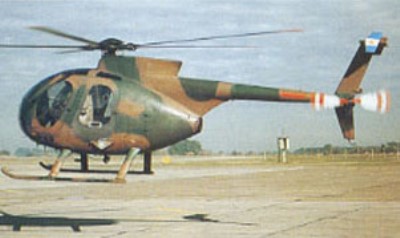
HELICOPTER: INTERPRETATIVE INCONSISTENCIES…
We will review each aspect that the misinformers present as «true,» when in reality they are simply inconsistent interpretations.
A – EXCELLENT WEATHER CONDITIONS
The first thing worth highlighting is the excellent weather conditions at the time of the observation. This detail is not minor in any observation, and even less so in this one.
B – SURPRISE
The witness observed an object that surprised him. Not the surprise of a plane crash, nor a conventional object on the ground, which could well lead him to rush for help or express himself verbally. What he did immediately was not that; he went to reach for his automatic pistol, even before noticing the three figures.
C – THE FIGURES
His movements were not agile, but rather showed difficulty and slowness. This is not a common or normal situation.
D – UFO WITH DOME AND LIGHTS IN THE MIDDLE AREA
The object observed had characteristics typical of many UFO descriptions, not helicopters. This gave the witness the sensation of being in the presence of something strange and led him to reach for his weapon. The dome and peripheral lights in the middle area are examples.
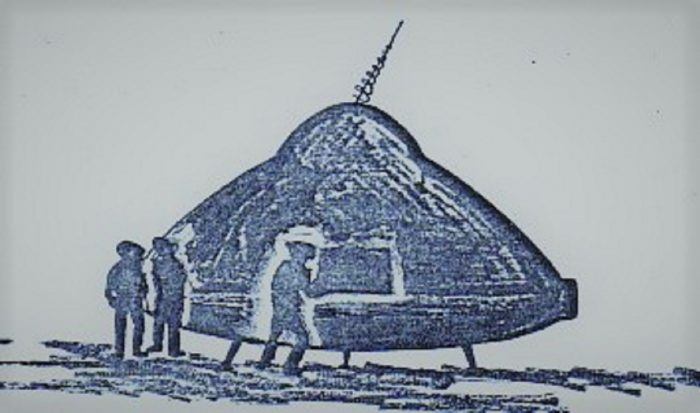
E – FIGURES APPROACHING SOUNDLESSLY
If we’re talking about a «helicopter,» it’s unclear why the figures approached Fuentes noiselessly (even though they perceived him pointing a gun at them).
F – PARALYSIS AND SENSATIONS
Fuentes said he felt «paralyzed» and believed he received a mental message: «Don’t shoot because it’s useless» (both situations have been recurrent in UFO phenomenology: «paralysis» and the «primary mental message»).
He describes the physical effect produced as a vibration and an inability to move.
G – LADDER?
Although Fuentes had the impression that the figures were descending some kind of ladder, he never perceived it. There’s a substantial difference between seeing it and assuming it. The «ladder» seems to fit with those who promoted the helicopter explanation.
H – SOUNDS
The witness reports a buzzing sound as the UFO took off (a very clear pattern of the phenomenon). He describes it as «fantastic.» The «new interpretation» attempts to equate it with the sound of a helicopter, since, in a statement by Fuentes, he simulates it as a «biug…biug…biug» (a cyclical sound). This interpretation is entirely subjective and attempts to conform to the sound a helicopter should make upon takeoff.
We are not informed about the prior sound of any hypothetical helicopter, which should have been heard not only by Fuentes but also by his companions.
I – DURATION
The duration of the incident coincides with that reported in many similar encounters.
J – OFFICIAL INVESTIGATION?
Fuentes clearly indicated the presence of two «US Embassy staff» in the investigations. It’s even more surprising that Hourcade (who had access to the case less than a year after it occurred) hasn’t delved into this point or questioned whether these people actually belonged to an embassy or to which agency they belonged. We’re assuming something that isn’t.
K – OBJECT COLOR
Fuentes specifically points out that the color observed on the object was «mahogany,» with something «reddish, as if burnt» on the surface. The «new interpretation» would lead us to Argentine helicopters painted «that color.»
This is inaccurate: data from the Argentine Armed Forces at the time mentions:
«(The acquired helicopters) were characterized by their green paint. They were easily identifiable by their polished metal outline, the text «Argentine Air Force,» and the black license plates.»
While the author of the «new interpretation» stops short of stating, «With this, we do not mean to imply that the helicopter that gave rise to the case was of Argentine origin,» he immediately implies that it would be Argentine, as this is «the closest geographical reference»
L – ATTITUDE OF THE FIGURES
In addition to describing them as carrying some unusual accessory or shape on their backs or heads, Fuentes provides details that have been repeated in hundreds of cases around the world: evading any attempt at aggression.
In trying to fit this into the «helicopter explanation,» Hourcade himself mentions: «Perhaps the individuals in the helicopter, upon verifying Fuentes’ reaction, decided to leave immediately…» (End of quote).
This interpretation doesn’t fit any circumstance.
In fact, even in a surreptitious action, the most expected behaviors of the helicopter crew would be:
– Attempting to communicate in some way (especially in the case of the same language and in very close countries like Uruguay and Argentina), citing some excuse, real or not.
– Rejecting Fuentes’ action
The attitude of withdrawing silently doesn’t fit with our common sense, especially when the three crew members of the supposed «helicopter» were pointed at with a gun. And this fits with the attitude observed and reported in countless anomalous UFO cases.
M – WITNESS INFLUENCED BY TELEVISION
It’s not surprising that the witness watched the Argentine program of the famous Pipo Mancera, which addressed the UFO topic.
Not surprisingly, Mancera was known as «Mr. Television» due to his program «Sábados Circulares,» which aired from 1962 to 1974 and its high ratings. (QUOTE 4)
In an era with few television channels, virtually no one missed that program.
The year Mancera highlighted the UFO topic was 1968 (not 1972), and his program generally focused on news reports, music, and entertainment.
The program generally did not address the topic, and only gained some popularity in 1968 with some Argentine cases.
The claim that the cases presented went down in history as «frauds» is just another of Hourcade’s interpretations.
This entire addition is a simple assumption that contributes nothing to the veracity of the witness profile.
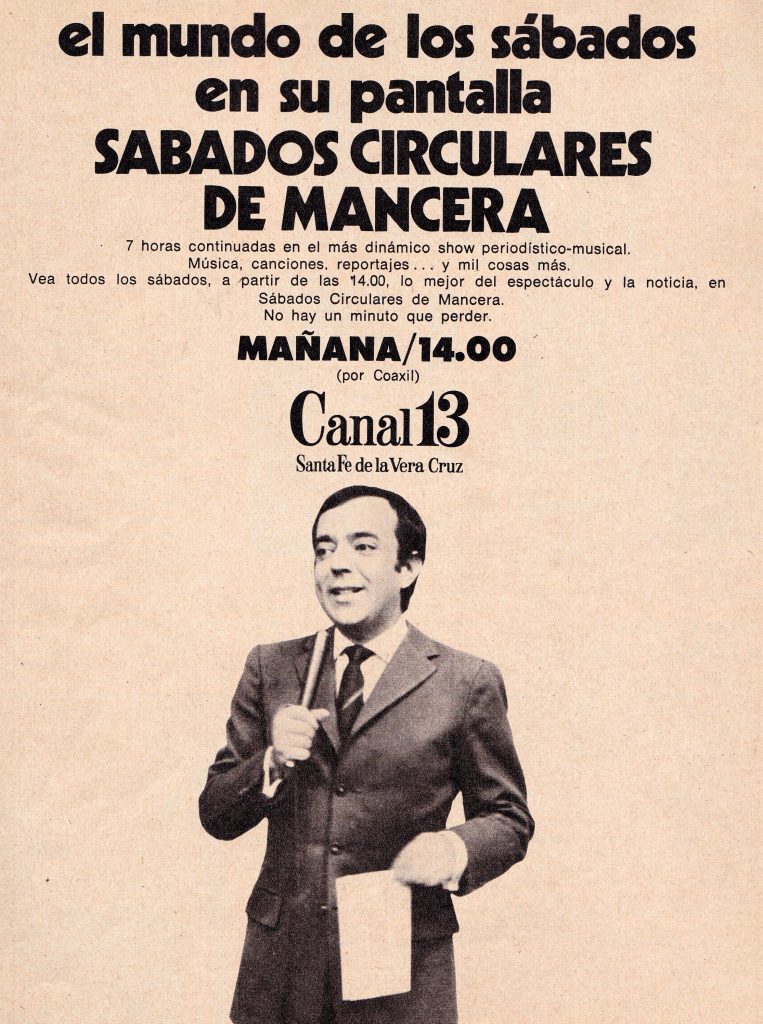
AND WHAT ABOUT THE FIRST CIOVI REPORT?
If anything was missing from Hourcade’s bold statement of reasons, we must highlight the 1978 article by another member of his same CIOVI group, Germán Vázquez.
It stated:
«All necessary investigative procedures were completed. Numerous interviews were held with the witness, with his colleagues from that October night in 1972, and with his superiors. We went to the site of the observation to take the corresponding measurements, accompanied by Corporal J.F. He underwent a nine-hour psychological test conducted by specialized advisory staff from our Center.
After several months of careful study of the case, the following conclusion was reached: Despite certain negative aspects of the witness, which would be evident mainly in his behavior (he did not immediately report the observation to his colleagues, but rather dealt with the situation on his own and ran to get a weapon), the case presents characteristics amply confirmed by background information that the witness was unaware of. Therefore, while the CIOVI cannot categorically affirm that there was a UFO on Lobos Island on October 28, 1972, there is a high degree of probability that it actually occurred.
The investigation and studies carried out do not reveal any stimulus, natural or artificial, which could have caused the event, apart from what the witness reported.» (QUOTE 5)
The paragraph «no natural or artificial stimulus arises» completely contradicts subsequent speculation.
Furthermore, it would be important to know the name of the alleged medical professional who performed the «9 hours of psychological testing» on the witness, who is NOT named in the report.
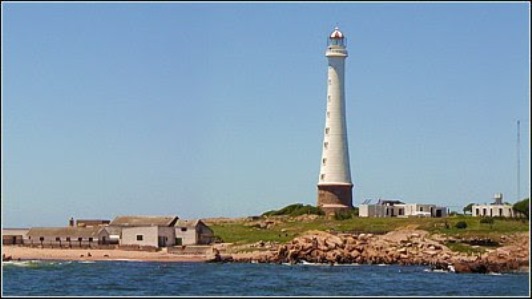
CONCLUSIONS…
Although we cannot know the origin of what Fuentes perceived, we do know what he did not see (the alleged helicopter).
Everything seems to fit the typical description of a Close Encounter of the Third Kind, given the patterns and constants already found in countless cases around the world.
Fuentes took those images to the grave, along with an experience that left deep psychological scars and physical effects.
Regarding the aforementioned «helicopter,» some reflections:
1 – Lobos Island is a remote and restricted area, difficult to access, controlled by the Uruguayan Navy. At the time of the incident, there was some political and military tension between the Navy and the rest of the forces. Furthermore, the «Capitán Carlos A. Curbelo» Naval Air Base is located near the area, which shares a platform with ESANA (Naval Aviation School).
2 – It is unacceptable that a helicopter entered the area without emitting the characteristic sound (which is only mentioned at the end of the episode, but not before). This is not exactly a situation of widespread ambient noise, so such a detail would not be taken into account.
3 – Neither the color nor the general characteristics of the object match the description of a helicopter (its canopy, its dim lights that turned on and off, etc.).
4 – The information about the cutaneous effects on the witness is extremely important and very repetitive in close-range UFO incidents.
5 – The behavior of the crew of the supposed «helicopter» does not conform to any logic, as journalist Hourcade tries in vain to «explain.» It is unacceptable to observe that they do not utter a word and that they re-enter the object while a gun is pointed at them (beyond the description of slow movements and some kind of restraint on their head or back). On the contrary, it fits perfectly with the attitude of the occupants in cases of the third type (cancellation of the witness without major effects or escape).
Settling for a description like Hourcade’s: «Perhaps the individuals in the helicopter, upon verifying Fuentes’ reaction, decided to leave immediately…» is completely childish and ridiculous.
6 – The witness always displayed an attitude of surprise at anything anomalous, unknown, or unusual. This is also confirmed by his son’s words.
7 – If the interest of «US embassy staff» or some organization X is confirmed, we should ask ourselves… would such interest and investigation only be shown in the case of a helicopter witness? Shortly after the incident, did Hourcade never thoroughly investigate the situation?
8 – All investigations into the witness confirmed that he was not lying or fabricating anything. Therefore, Hourcade’s addition that witness Fuentes had watched television programs where the subject could have been discussed is a crude way of trying to fit the case and dismiss any mention of anything out of the ordinary.
9 – If we accept, even for a moment, the helicopter-on-site version, we should admit that a prototype from a neighboring country:
a – Violated Uruguayan regulations and airspace
b – Went unnoticed by the area’s surveillance, and even by those present
c – Landed there for a completely useless or unknown purpose (it would only be justified in the case of a technical problem, and if so, the crew would have reported it and not left quickly, because, furthermore, all this would have generated a conflict due to airspace violation).
The three previous statements are completely unacceptable.
Hourcade also dismisses the motive for the alleged «helicopter» landing when he states:
«The undersigned refrains from speculating on the reasons or motives why the helicopter landed on the date, place, and time indicated.»
Such a «prodigious» way of closing the package is not serious and is worthy of a mere opinion-monger. (QUOTE 6)
A serious investigation would delve into all the details of this, and also about the two people from the «American embassy.»
However, common sense and knowing all the details of the case are more than enough to avoid, even if the reasons are unknown, the strangeness and absurdity of such a situation being admitted and not raised in the argumentative context.
10) Regarding the Hughes’s range, we are informed:
Model 500 C = 605 km // Model 530 F = 422 km
Assuming the departure from the Seventh Air Brigade in Morón to Lobos Island (there is no reason to assume that said helicopter came from anywhere else, especially since Hourcade takes it into account due to its «closest geographic reference»), we obtain an almost exact distance in a straight line (one way):
346 kilometers
That implies 692 kilometers (round trip), which is completely unfeasible (exceeding the limits of what was planned).
This cannot be separated or separated from the real reason why an Argentine helicopter would travel to such a location, only to descend and ascend rapidly, generating an international conflict and even endangering the safety of its own crew, and being pointed at with a weapon, without uttering the slightest word (not even in the same language) and re-entering the object.
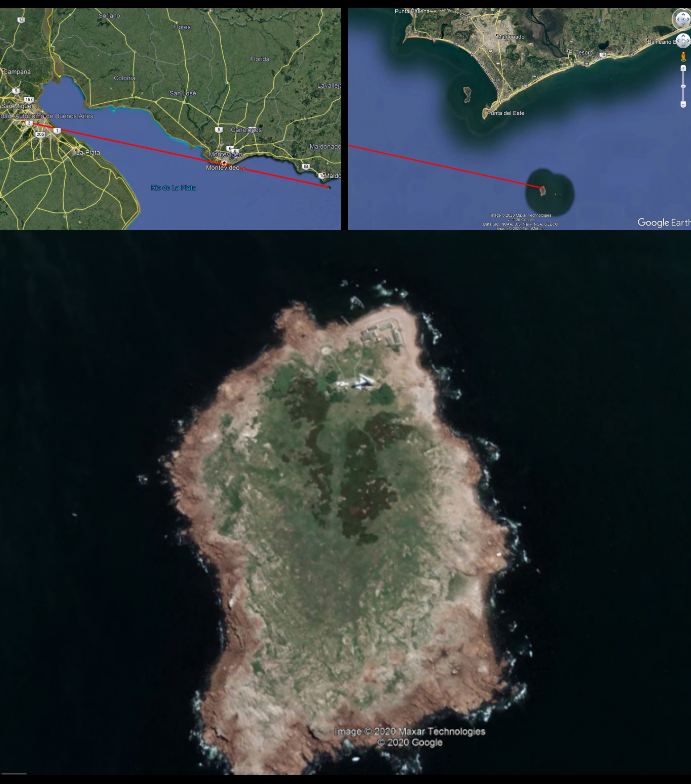
EPILOGUE… AND CHALLENGE
Once again, the disinformation campaigners’ eagerness to fit the pieces together and «explain and close» the cases is exposed by the absurd interpretation we have seen.
This case, like many others, is «explained» in vain years later, when the witnesses are no longer with us.
Today, journalist Hourcade is an external advisor to the Argentine Aerospace Identification Center (CIAE), promoted by its director, retired Commodore Lianza. Perhaps in 2005 (when Hourcade presented the «helicopter» version), he didn’t think he’d ever occupy his current position as an «advisor.»
But since he is now an advisor, and taking advantage of the CIAE director’s technical punctuality in explaining all the cases as simple confusion and dismissing them, both have everything they need to close the case properly and jointly.
After all, this is what they’re trying to do with UFO cases (which are still 25 years old, like the Bariloche incident or the 1952 New Jersey incident).
Therefore, we challenge Milton Hourcade (in his capacity as «Advisor») and Ciae Director Rubén Lianza (on the Argentine side) to:
A – Provide data on possible Argentine air traffic on the night of October 28, 1972, when the helicopter took off from Morón between approximately 8:00 and 8:20 p.m.
B – State the registration number of the alleged Argentine helicopter.
C – Specify the «Mission» the aircraft was carrying out off the Argentine coast, or whether the descent was due to an accidental failure.
Joint binational work could be a good excuse to clarify the case. After all, from their perspective, it is a very earthly event.
Attempting to «close» an incident by arguing that it was a conventional prototype (and therefore regionally close) must contain something more than the simple explanation that it is unknown why the helicopter landed there.
A meticulous investigator should delve deeper into this matter.
It is evident—in conclusion—that the helicopter «explanation» in this case is simply a personal interpretation, supported only by the author’s own imagination.
Carlos Ferguson

The Author: He was the first advisor to the Argentine Air Force (2011 to 2017) in Ufology. Carlos Ferguson works in the areas of Education (Buenos Aires Province, Argentina) and administrative tasks. He is also an art teacher and has been researching the UFO topic for 48 years. As a non-believer, he had a close encounter with a disc-shaped UFO at a distance of no more than 35 meters. He has courses in Satellite Technology, Remote Sensing, and Geographic Information Systems. He is the author of seven books and the largest compilation of landing cases in Argentina, with classified facts. He has also conducted studies on pilots and UFOs in Argentina, as well as on underwater objects and, more recently, on the physiological and electromagnetic effects on witnesses. Hundreds of talks and notes over nearly five decades demonstrate his work aligned with statistical parameters.
QUOTES
QUOTE 1 = Dr. Willy Smith earned his PhD in Physics in 1964 from the University of Michigan. After working for a year at the Puerto Rico Atomic Energy Fund, he dedicated the rest of his professional career to teaching, serving as a physics professor at the University of Michigan, Lycoming College (United States), and the University of Valencia (Spain). His interest in the subject of UFOs began in the 1950s and was strongly rekindled after a sabbatical in Europe in 1973, when he had the opportunity to meet and exchange ideas with leading researchers in the field, both in Spain and France. Finally, in 1980, he decided to abandon all his other activities and dedicate himself entirely to the study of the UFO phenomenon. At the end of 1983, he initiated, together with Dr. Hynek, the Unicat Project, initially conceived as a high-quality database of UFO cases. Thanks to his international contacts and his work with the Unicat database, he acquired a deep understanding of UFOs in the United States. He traveled extensively throughout Latin America, giving lectures in numerous countries, especially Argentina, Uruguay, Brazil, Paraguay, and Ecuador. In November 1990, he visited Australia and Tasmania. After Dr. Hynek’s death, he assumed responsibility for the Unicat Project. Smith died in 2006 at his home in Miami, at the age of 82.
QUOTE 2 = https://es.wikipedia.org/wiki/Hughes_OH-6_Cayuse
QUOTE 3 = https://aerospotter.blogspot.com/2010/07/hughes-de-la-fuerza-aerea-argentina.html
QUOTE 4 = «Sábados Circulares de Mancera» was a popular Argentine television program hosted by Nicolás «Pipo» Mancera. It first aired (under the name Circulares de Mancera) on January 6, 1962. It aired on Channel 9, Channel 13, and Channel 11. It remained on the air until 1974, reaching a rating of 82. It was relaunched in 2007 by Crónica TV. It was technically classified as an «omnibus program» as it lasted six hours and featured the most renowned national and international figures of the time. The program addressed the UFO theme, but only sporadically, and featured singers and actors. A simple list is enough to understand this: Sandro, Lola Flores, Raphael, legendary Mexican actress María Félix, famous Spanish bullfighter Manuel Benítez «El Cordobés,» an unknown child named Diego Maradona, soccer superstar Pelé, Spanish singer-songwriter Joan Manuel Serrat, Geraldine Chaplin, Marcello Mastroianni, Simone Signoret, Sophia Loren, Scottish actor Sean Connery, boxer Ringo Bonavena, Alain Delon, etc.
QUOTE 5 = «The Lobos Island Case: An Encounter of the Third Kind?» – Germán Vázquez, UFO Press No. 8, July 1978.
QUOTE 6 = Hourcade has described me as a self-satisfied person, which fills me with pride. He doesn’t accept money from anyone and expresses what I believe to be the best feelings Hourcade has ever experienced. His resentment stems from exposing these cases, which he has attempted to close with unfounded interpretations.

